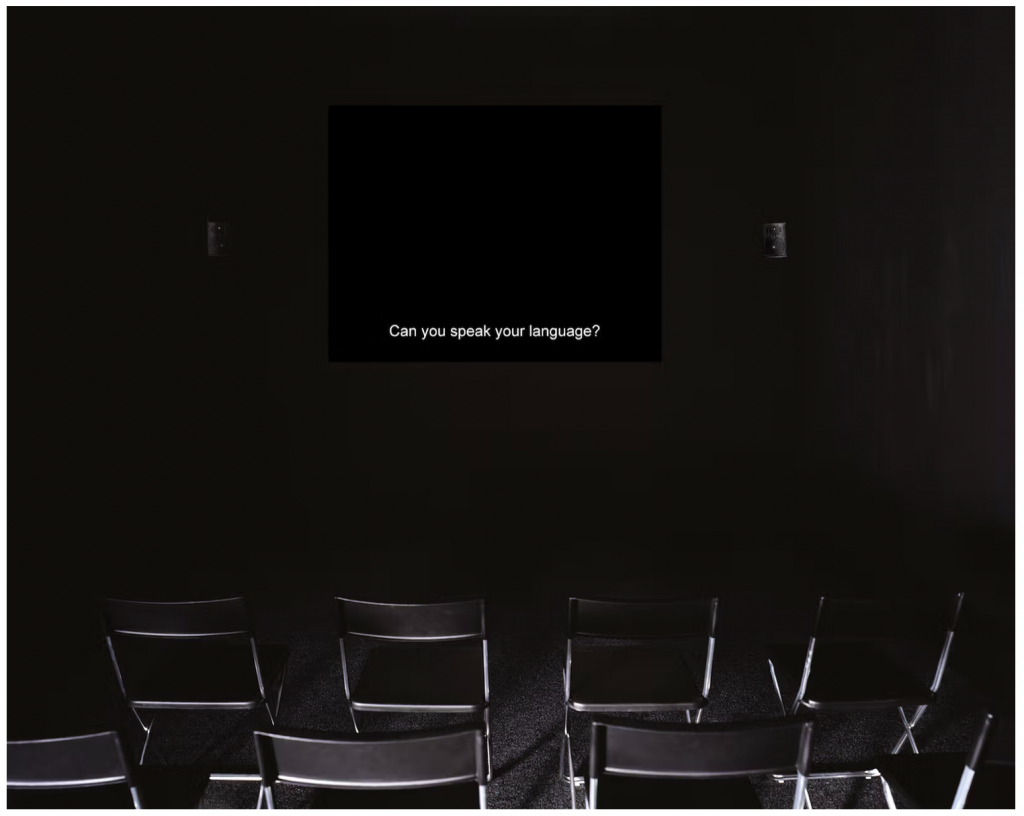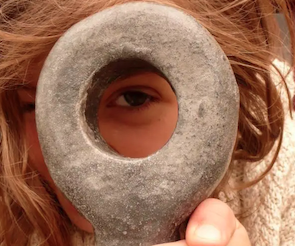(Artist case study)
“An old man confronts us with some truths about language. The strangeness of his voice merges with the buzzing and humming artefacts of an archaic recording mechanism. A young girl repeats words she is trying to memorize in what sounds like French. Several men exuberantly chant fragments of a creation myth. An elderly woman tells a story of jealousy and murder to an appreciative listener.”

‘The Last Silent Movie’ is a 21 minute audio installation that is constructed from archival recordings of dead or dying languages, sections of the voices are translated into English subtitles and played against a black screen for the duration. Hiller sourced her material from linguistic and ethnographic collections, taking fragmented recordings of speaking, singing, prayers, telling stories, or even simply counting. The piece features a lot of the last surviving speakers of the languages, for example the K’ora from South Africa, recorded in 1938- a language that is now entirely extinct. Likewise, Manx, a languages that derived from the Isle of Man, documented in 1948, now unused. The piece is choreographed in a sequence that recalls a series of lost and destroyed worlds, reinstating them through the medium of sound.
I chose to write a research blog on Susan Hiller’s work as I felt it belonged within multiple angles of my research, within the sonic memory aspect, as well as the indigenous cultures. When trying to find an artist to write about I kept coming across people who were creating institutions surrounding the topic of memories, however were doing it in a more subtle way, and a way I couldn’t really connect to. Hiller’s work really stood out to me, not only because she was using words and language instead of music, but also because it made me feel something. The entirely black screen really forces you to really listen to their voices, creating these images in your head of what each person looks like- presumptions made entirely off of your own stereotypes and relation to cultural experiences.
This exhibition is mourning these lost and forgotten languages, that are not only voices but entire cultures and communities that has been demolished along with the language. These recordings, once lost deep in archives now almost setting free these ghost like characters who have been lingering within these recordings for years. Now heard again.
“I wanted to make the absences audible.” -Susan Hiller.
The installation functions as both an archive and an act of resurrection. Hiller draws your attention onto the cultural memories embedded within sound and oral storytelling, allowing the incredibly powerful emotional resonance of the voices to remain, even when the languages are incomprehensible for the viewer. This really emphasises how such identity and presence can be presented through sound, no matter a linguistic divide, there are certain emotions embedded in sounds and oral storytelling that are universal. These emotions are planted through memories and an understanding from birth of the distinct sounds of certain emotions, even though you’re unaware of what’s being said. The subtitle translations in the piece serve as a literal interpretation sure, but also as a strong connection to meaning, encouraging reflection on the density of life that is lost when a language disappears.

Leave a Reply